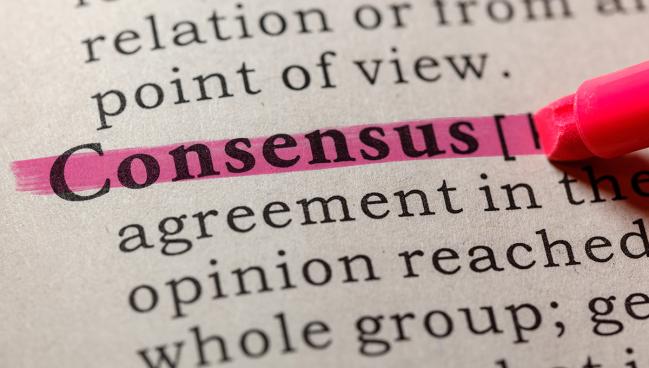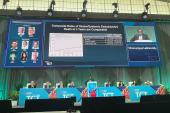SCAI/HRS Consensus Document Covers the Ins and Outs of LAAO
It’s a practical document that should prove useful for operators and centers across the experience spectrum, Jacqueline Saw says.

The Society for Cardiovascular Angiography and Interventions (SCAI) and the Heart Rhythm Society (HRS) have released a new expert consensus statement on left atrial appendage occlusion (LAAO) for stroke prevention in patients with atrial fibrillation (AF) following several years of advancements in techniques, devices, and imaging, and with growing evidence from trials and registries.
Prior documents released more than 7 years ago shortly after the first LAAO device was approved by the US Food and Drug Administration—the first-generation Watchman (Boston Scientific)—provided an overview of where the procedure would fit into clinical practice and recommendations for operator and institutional requirements.
But with the evolution of the procedure and available data since then, as well as the introduction of new and iterated devices, there was a need for additional guidance around LAAO, which has emerged as another option for patients who can’t—or won’t—take long-term anticoagulation, according to Jacqueline Saw, MD (Vancouver General Hospital, University of British Columbia, Canada), chair of the writing group.
“We needed a new document to really provide best evidence-based recommendations for optimal practice,” Saw told TCTMD.
The statement, published online Monday in JSCAI and endorsed by the American College of Cardiology and the Society of Cardiovascular Computed Tomography, helps fill that gap. It covers several key areas spanning patient selection; physician and institutional requirements; imaging before, during, and after the procedure; technical aspects of the procedure; and recognition and management of intraprocedural complications and late adverse events.
Patient, Operator, and Site Recommendations
As for who are the best candidates for LAAO, the authors point to “patients with nonvalvular atrial fibrillation with high thromboembolic risk who are not suited for long-term oral anticoagulation and who have adequate life expectancy (minimum >1 year) and quality of life to benefit from LAA closure. There should be patient-provider discussion for shared decision-making.”
Before starting to perform the procedure, physicians should have prior experience with other interventions, including at least 50 left-sided ablations or structural procedures and at least 25 transseptal punctures, according to the document. Interventional imaging physicians should have guided at least 25 transseptal punctures before supporting LAAO procedures.
Once operators have gotten started, they should do at least 25 transseptal punctures and more than 12 LAAO procedures over each 2-year period to keep their skills fresh.
For centers, Saw et al recommend on-site cardiovascular surgery backup when programs are new and implanting physicians are early in their experience.
The document also covers imaging at various stages, providing recommendations for preprocedural evaluation with transesophageal echocardiography (TEE) or cardiac CT angiography; intraprocedural guidance with TEE or intracardiac echo; and then a predischarge assessment with two-dimensional transthoracic echo (TTE) to rule out pericardial effusion and device embolization. Same-day discharge might be acceptable after keeping patients for several hours of observation to make sure there are no complications, the authors say.
Saw et al discuss the importance of operators being familiar with complications and how to either avoid them or manage them when they occur. These include both periprocedural complications like pericardial effusion, stroke, and device embolization and late adverse events like device-related thrombosis, residual iatrogenic atrial septal defects, peridevice leaks, late pericardial effusion, and other rarer complications.
There has been a growing amount of research into the clinical impact of peridevice leaks in recent years, but there remains some uncertainty about their significance.
“There is concern about any device leak, even those less than 5 mm, that might be associated with higher thromboembolic events at follow-up, so we suggest that during implants, we should try and minimize any peridevice leak,” Saw said. “But at this point, there’s still relatively limited data and there’s no randomized trial data on how to manage these peridevice leaks and if these [measures] will improve outcomes.”
Other parts of the document discuss management of patients in the months to years after LAAO. As for postprocedural medication regimens, the authors say “patients should be prescribed antithrombotic therapy with warfarin, direct oral anticoagulants, or dual antiplatelet therapy after LAAO according to the studied regimen and instructions for use for each specific device and tailored to the bleeding risks of each patient,” noting that there is not sufficient evidence to recommend an optimal approach.
Patients also should be evaluated 45 to 90 days after LAAO for peridevice leak and device-related thrombus, using TEE or cardiac CT, and “a second imaging at 1 year should be considered if a peridevice leak is there at prior imaging or if there are concerns for device-related thrombus risk,” according to the document.
Although this statement provides up-to-date information on best practices, there are still some open questions around LAAO, Saw said. Ongoing trials will provide insights into the use of LAAO combined with other procedures, like catheter ablation or structural heart interventions, and about the comparative safety and effectiveness of LAAO versus direct oral anticoagulants. And eventually, as more devices enter the market, head-to-head trials will provide information on the best options for certain anatomies.
For now, this statement “solidifies and clarifies what the optimal practice is currently in North America,” Saw said, adding that the practical recommendations should prove useful for operators and centers regardless of whether they’re just starting out with LAAO or have more experience with the procedure.
Todd Neale is the Associate News Editor for TCTMD and a Senior Medical Journalist. He got his start in journalism at …
Read Full BioSources
Saw J, Holmes DR, Cavalcante JL, et al. SCAI/HRS expert consensus statement on transcatheter left atrial appendage closure. JSCAI. 2023;Epub ahead of print.
Disclosures
- Saw reports no relevant conflicts of interest.





Comments